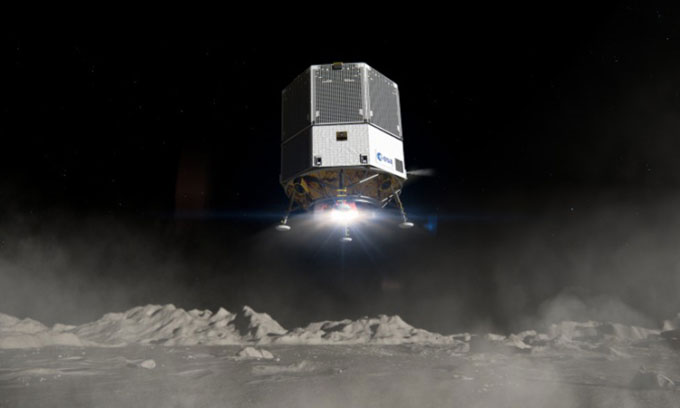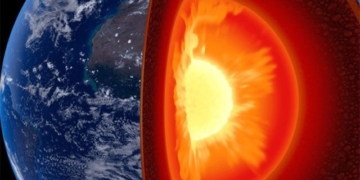The European Space Agency plans to deploy a device capable of extracting 70% of the oxygen from the lunar surface by 2030.
In a post on March 9, the European Space Agency (ESA) revealed it has selected Thales Alenia Space from the UK to manufacture a compact oxygen extraction device, after evaluating three designs from different competing teams.

Simulation of a lunar lander carrying the oxygen extraction device. (Photo: ESA).
The new space device will help ESA assess whether larger models—such as oxygen extraction plants for astronaut breathing and rocket propellant—are feasible on the Moon. In fact, last April, NASA achieved an impressive milestone by extracting oxygen from Mars using a device called MOXIE that traveled to the Red Planet aboard the Perseverance rover.
The design from Thales Alenia Space needs to be compact yet capable of extracting 50 to 100 grams of oxygen from the lunar surface layer, which can be achieved by extracting about 70% of the total available oxygen in collected samples. As a reference, 5 grams of oxygen is sufficient for astronauts to breathe for 10 minutes.
Additionally, the device will need to collect all the oxygen within approximately 10 days. This is because it runs on solar power, which will be limited when the lunar day (lasting two weeks) turns into a dark and frigid lunar night.
“The device needs to be compact, low-power, and capable of flying on a range of potential lunar landers, including ESA’s large logistics lander EL3,” said David Binns, ESA’s system engineer. “The ability to extract oxygen along with usable metals from the surface will be a game-changer in lunar exploration, allowing international explorers to return to this celestial body without reliance on costly supplies from Earth.”
If everything goes according to plan, we may see a full-sized model sent to the Moon on ESA’s logistics lander in the early 2030s, according to research team leader Giorgio Magistrati at ESA.


















































